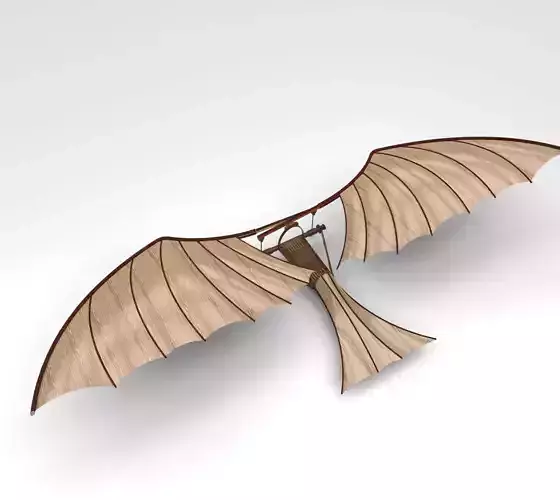1/6
The word 'ornithopter' comes from two ancient Greek words: the word for 'bird' and the word for 'wings'.Thus, it is clear from the outset that this invention by the Renaissance polymath Leonardo da Vinci will have some resemblance to a bird's wings.
And indeed, an ornithopter is a type of flying machine that is designed to work by mimicking the flapping motion of a bird's wings.
Though da Vinci's ornithopter is not the only flying machine to have been invented in the early modern period (he was preceded, for instance, by the famous medieval monk Elmer of Malmesbury who attempted to fly from the top of his cathedral using his home made wings), it is certainly one of the most famous.
Da Vinci's ornithopter differs from earlier models (such as those envisioned by Elmer and by the medieval scientist Roger Bacon) in that is does not simply consist of a pair of mechanical wings to be attached to the human being's arms.
Instead, da Vinci's version is more of an all encompassing machine which features sets of foot pedals and manually operated levers to get the machine off the ground and into the air.
Why did da Vinci make these adjustments? Being as he was a devoted comparative anatomist as well as a mechanical engineer, he spent a great deal of time studying the way in which birds' wings moved in flight and the way that their bones were structured to enable them to fly.
He concluded that the human arm, even with wings strapped to it, was unable to support the human body in flight. Thus, he created a vessel that was more like a foot operated pedalo boat for traversing the air rather than a pair of wings that would essentially turn a human being into a giant bat.
Nevertheless, da Vinci's ornithopter does contain the large bat like wings (which probably would have been made out of a membrane such as leather) that had characterised earlier ornithopters.
It is perhaps slightly misleading that the word ornithopter derives - as mentioned above - from the Greek word for bird. These devices tended to resemble bats more than birds as they used membranous wings rather than feathered ones.
Unfortunately, da Vinci's ornithopter never flew. What we have before us when we look at this sketch is a fanciful design that was backed up by scientific observation and mechanical knowledge, but which ultimately never got off the ground (in both the literal and the figurative senses of the word).
In fact, the first ornithopters to fly successfully were built many centuries after da Vinci's death, in mid nineteenth century France. They were aided by the use of combustion fuels.Source: Wikipedia
REVIEWS & COMMENTS
accuracy, and usability.






